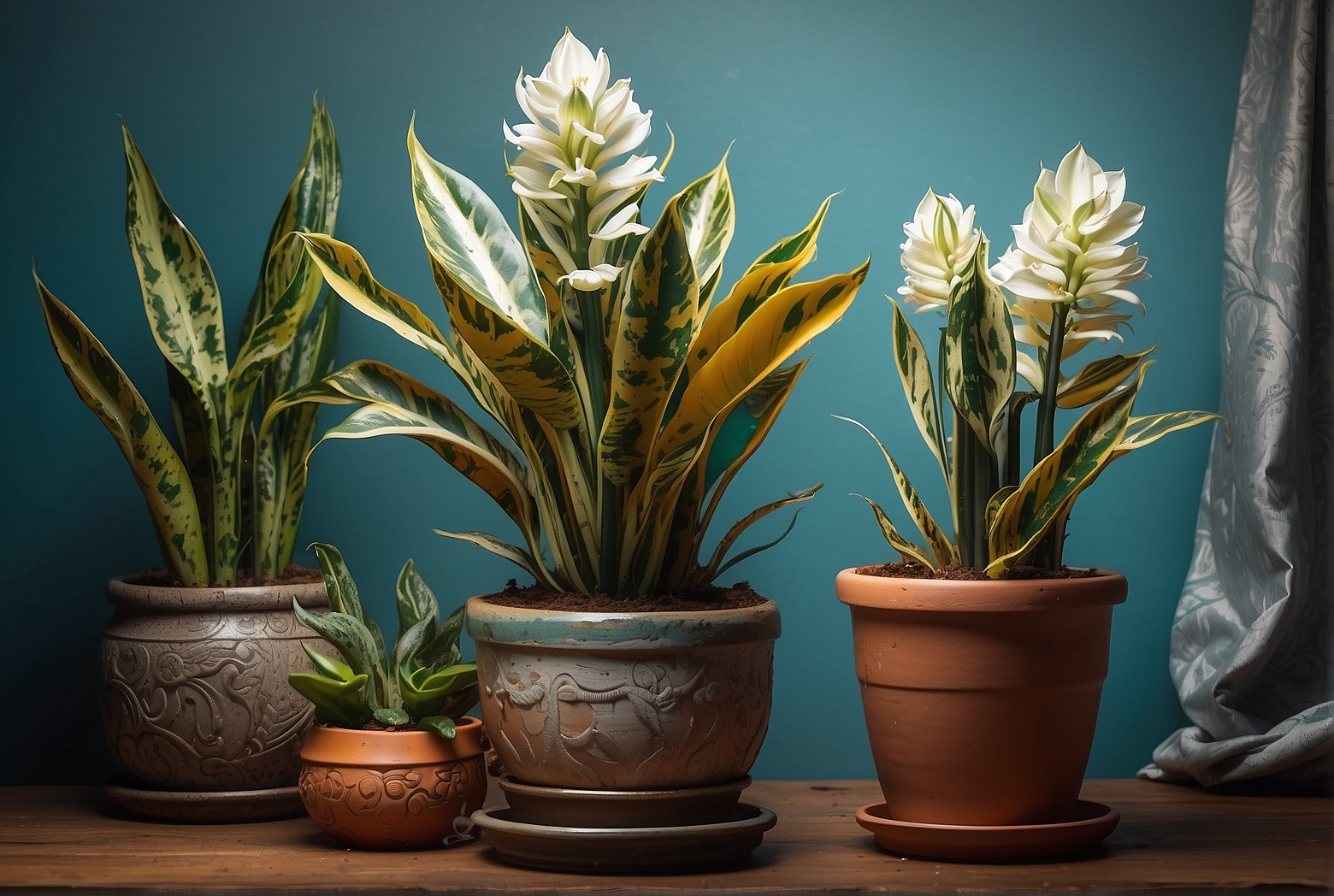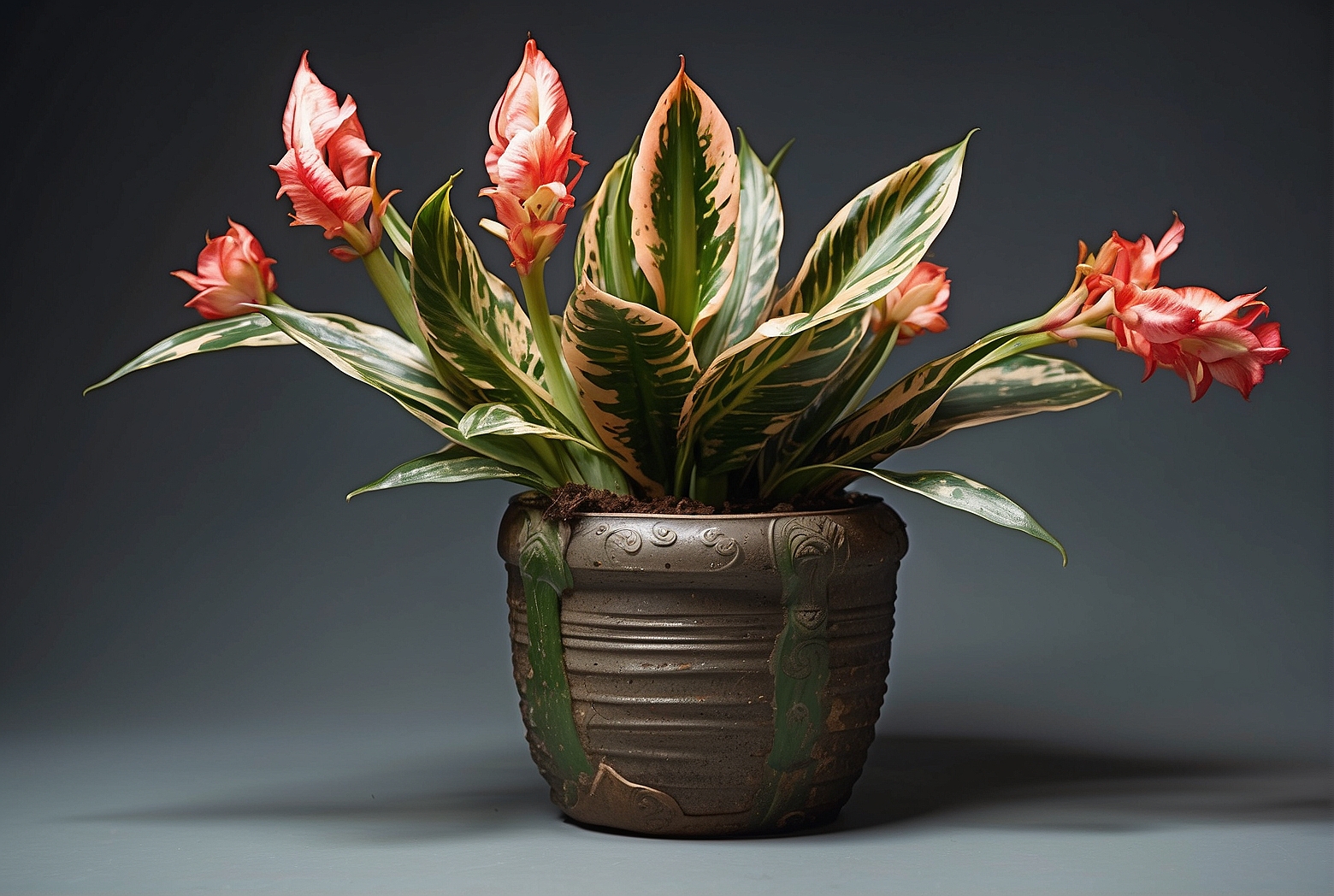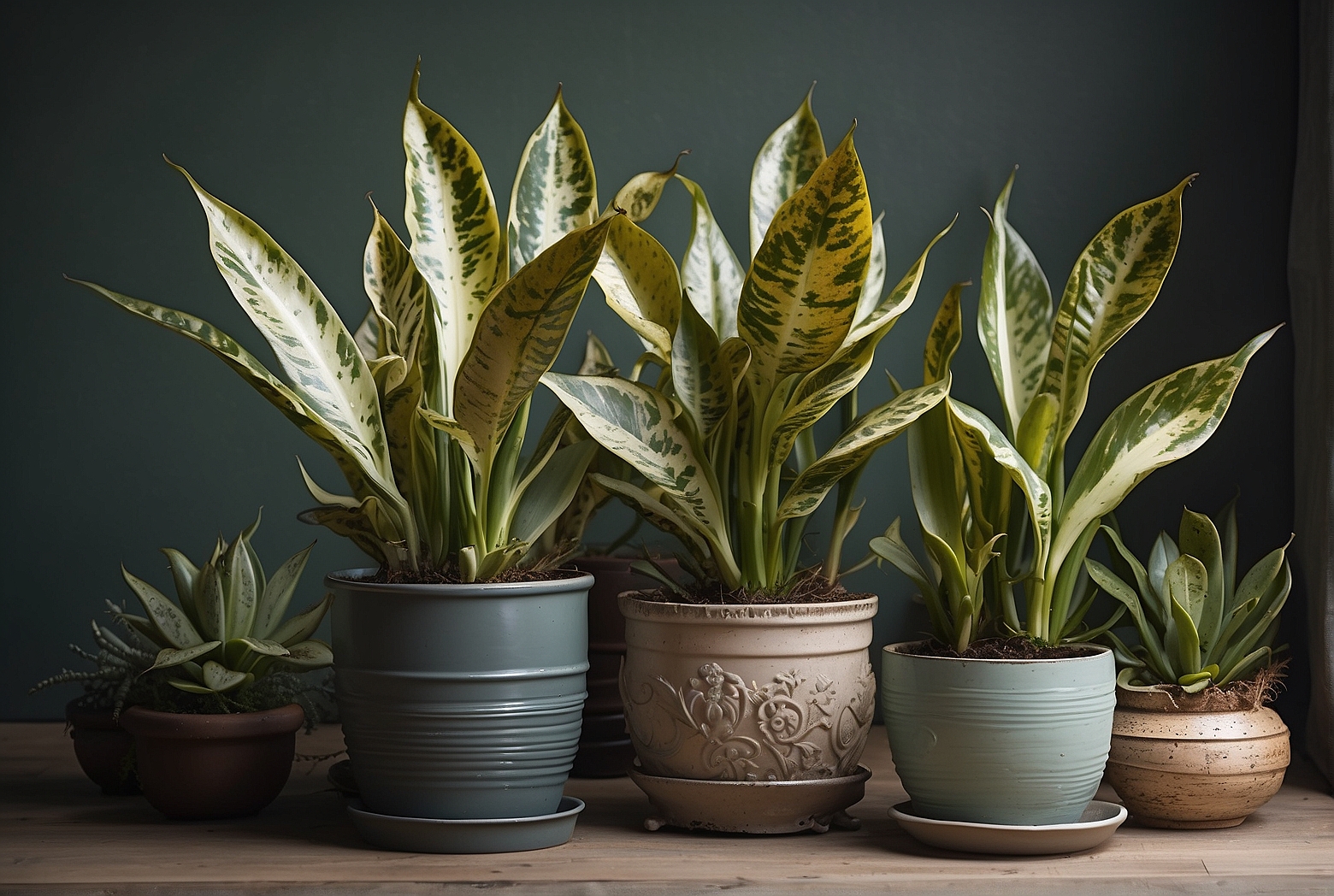Last Updated on April 15, 2024 by Tony Manhart
Did you know that snake plants, also known as Sansevieria, have the potential to produce delicate and beautiful blooms? Despite being renowned for their hardiness and low-maintenance nature, snake plants possess the ability to surprise us with their elegant flowers. So, if you want to discover whether your beloved snake plant has the capability to bloom and add a touch of vibrancy to your space, you’re in for an interesting revelation. Let’s explore the fascinating world of snake plant flowers and unveil the enchanting secret they hold.
Snake Plants and Flowering
Snake Plants: An Overview
Snake plants, scientifically known as Sansevieria, are popular houseplants valued for their unique appearance and low maintenance requirements. These plants are native to West Africa and are known for their upright, sword-shaped leaves that can grow up to several feet in height. While snake plants are commonly grown for their foliage, many people wonder if these plants are capable of flowering. In this article, we will explore the fascinating topic of snake plants and flowering, including the factors that influence flowering, the different varieties that may produce flowers, and how to care for these plants during the flowering process.
The Flowering Process in Plants
Before diving into the specifics of snake plant flowering, it is important to understand the general process of flowering in plants. Flowering is a crucial stage in the life cycle of many plants, as it is during this period that they produce and reproduce through seeds. Flowering plants typically go through a series of stages, including bud formation, flower development, pollination, and finally, seed production. The process is influenced by various internal and external factors, which we will explore in the context of snake plants.
Factors Affecting Flowering in Snake Plants
While snake plants have the potential to produce flowers, several factors can impact their ability to do so. Light, temperature, humidity, soil, and watering practices all play a role in the flowering process. Snake plants are known for their adaptability and ability to tolerate a wide range of conditions, but providing optimal conditions can significantly increase the likelihood of flowering. Understanding these factors and providing the necessary care can help encourage snake plants to flower and thrive.

Understanding Snake Plant Anatomy
The Structure of Snake Plants
To understand how snake plants flower, it is essential to have a basic understanding of their anatomy. Snake plants consist of several key components, including the roots, rhizome, leaves, and flowers. The roots are responsible for absorbing water and nutrients from the soil, while the rhizome acts as a storage organ for energy reserves. The leaves grow directly from the rhizome and play a crucial role in photosynthesis. The flowers, when present, emerge on long stalks and typically develop at the base of a mature leaf.
Flower Formation in Snake Plants
The formation of flowers in snake plants is a complex process that requires specific conditions to occur. Flower bud initiation usually begins during the spring and summer months when the plant is actively growing. The development of flower buds depends on a combination of factors such as age, maturity, and environmental conditions. As the buds mature, they gradually develop into vibrant flowers that can vary in color and shape depending on the species and variety of snake plant.
Varieties of Snake Plants
Common Varieties of Snake Plants
Snake plants come in various varieties, each with its unique characteristics and growth habits. Some of the most common snake plant varieties include Sansevieria trifasciata, Sansevieria cylindrica, and Sansevieria laurentii. Sansevieria trifasciata, also known as the “Mother-in-law’s Tongue,” is a popular choice for its striking upright leaves with yellow margins. Sansevieria cylindrica, or the “Cylindrical Snake Plant,” features cylindrical leaves that grow in a compact rosette pattern. Sansevieria laurentii, often called the “Golden Snake Plant,” has long, arching leaves with bright yellow edges.
Flowering Potential of Different Varieties
While all snake plant varieties have the potential to produce flowers, not all varieties are equally likely to do so. Sansevieria trifasciata is the most commonly seen flowering variety, with its tall flower stalks adorned with clusters of small, white or greenish-white flowers. Sansevieria cylindrica may produce flowers, but they are less common and usually less showy compared to Sansevieria trifasciata. Sansevieria laurentii, on the other hand, is less likely to flower, and when it does, the flowers are quite rare and not as prominent. It is important to note that the flowering potential can vary even within the same variety, depending on the plant’s overall health and growing conditions.

Conditions for Flowering
Light Requirements for Flowering
Proper lighting is crucial for snake plants to flower successfully. These plants generally prefer bright, indirect light but can tolerate low light conditions as well. However, insufficient light can significantly reduce the chances of flowering. To maximize the flowering potential, place your snake plant in an area where it receives several hours of indirect sunlight each day. Avoid exposing the plant to direct sunlight, as it can lead to sunburn and damage the leaves.
Temperature and Humidity Considerations
Snake plants are generally adaptable to a wide range of temperatures and humidity levels, making them suitable as indoor plants. However, providing appropriate temperature and humidity conditions can encourage flowering. Snake plants thrive in temperatures between 60°F and 85°F (15°C to 29°C), but they can also tolerate slightly cooler or warmer conditions. As for humidity, snake plants are known to tolerate low humidity levels, making them well-suited for dry indoor environments. Maintaining a moderate humidity level and avoiding extreme fluctuations can support optimal growth and flowering.
Soil and Watering Needs
The soil and watering practices also play a vital role in the flowering process of snake plants. These plants prefer well-draining soil that allows excess water to escape easily. The soil should be a mix of potting soil and sand or perlite to improve drainage. Overwatering can be detrimental to snake plants and may inhibit flowering. It is crucial to allow the soil to dry out between waterings, as snake plants are resilient and can tolerate periods of drought. When watering, ensure that the excess water drains thoroughly to prevent root rot and other water-related issues.
Flowering Frequency and Duration
Frequency of Flowering in Snake Plants
The frequency of flowering in snake plants can vary depending on several factors, including the variety, health of the plant, and growing conditions. Some well-maintained snake plants may produce flowers once a year or even more frequently, while others may not flower for several years. It is essential to remember that flowering is a natural process that cannot be forced or predicted with absolute certainty. However, by providing optimal care and suitable conditions, you can increase the chances of your snake plant flowering regularly.
Duration of Flowering Period
The duration of the flowering period in snake plants can also vary. Flowering typically lasts for a few weeks to a couple of months, during which the plant produces its showy blooms. The length of the flowering period depends on factors such as the variety, environmental conditions, and the time taken for the flowers to pollinate and develop seeds. Once the flowering period ends, the spent flowers will wither and eventually drop off. However, with proper care, your snake plant can continue to thrive and grow new leaves until the next flowering cycle.
Role of Propagation
Effect of Propagation on Flowering
Propagation, the process of creating new plants from existing ones, can impact the flowering capabilities of snake plants. When a snake plant is propagated through division or leaf cuttings, it directs its energy towards producing new roots and establishing itself. As a result, the plant may delay or suppress flowering until it reaches a mature state. It is important to note that a healthy and well-established snake plant is more likely to produce flowers than a young or recently propagated one.
Propagation Techniques to Stimulate Flowering
While propagation can affect flowering, there are certain techniques you can employ to stimulate flowering in propagated snake plants. Once the new plant has established a well-developed root system, you can provide it with optimal growing conditions mentioned earlier, such as appropriate lighting, temperature, humidity, and soil quality. Additionally, allowing some time for the plant to acclimate and mature before expecting flowers can contribute to increased flowering potential. By providing proper care and patience, your newly propagated snake plant may reward you with beautiful blooms.
Indications of Flowering
Signs of Impending Flowering
Knowing the signs of impending flowering can help you anticipate and prepare for this exciting stage in your snake plant’s life. One of the primary indicators is the emergence of a thick, elongated flower stalk at the base of a mature leaf. This stalk gradually grows taller and displays tiny buds that will eventually open into flowers. Additionally, some snake plant varieties may exhibit changes in leaf coloration or growth pattern just before flowering. Keeping a close eye on your plants and observing any unusual developments can help you identify the early signs of flowering.
Identifying Flowering in Snake Plants
As the flower buds develop and mature, the snake plant will reveal its beautiful blooms. The flowers may vary in color, ranging from white, greenish-white, or even pinkish hues, depending on the species and variety. The blooms are typically small and tubular in shape, arranged in clusters along the length of the stalk. While the flowers themselves are not as fragrant as some other houseplants, their presence adds a unique and visually appealing touch to your snake plant’s overall appearance. Be sure to take the time to observe and appreciate the beauty of your flowering snake plant.
Caring for Flowering Snake Plants
Maintaining Ideal Growing Conditions
Once your snake plant starts flowering, it is crucial to maintain the ideal growing conditions to support its overall health and well-being. Continue providing bright, indirect light, keeping the plant away from direct sunlight. Monitor the temperature and humidity levels to ensure they remain within the appropriate range. Water your plant carefully, allowing the soil to dry out between waterings to prevent overwatering. Regularly inspect your plant for any signs of pests or diseases and take appropriate action to mitigate any issues.
Pruning and Maintenance Tips
Pruning is an essential aspect of caring for flowering snake plants. As the flowers fade and the stalks become withered, carefully remove them by cutting them close to the base using a clean pair of shears. This will not only improve the plant’s aesthetics but also redirect its energy towards new growth. Regularly trim any yellowed, damaged, or overgrown leaves to maintain a neat and tidy appearance. Remember to sanitize your pruning tools before and after use to prevent the spread of diseases.
Common Flowering Issues
Common Problems with Flowering
While snake plants are generally resilient and low-maintenance, they may face certain issues during the flowering process. One common problem is the failure to produce flowers, which can be attributed to various factors, including inadequate lighting, improper temperature or humidity levels, or insufficient maturity. Another issue is the premature drooping or wilting of flowers, which can result from under or overwatering, poor ventilation, or unfavorable environmental conditions. It is essential to address these problems promptly to ensure the long-term health and flowering potential of your snake plant.
Troubleshooting Flowering Difficulties
If you encounter difficulties with the flowering process of your snake plant, there are steps you can take to troubleshoot and address the issues. First and foremost, evaluate the growing conditions and adjust them accordingly. Ensure that the plant receives sufficient light without being exposed to direct sunlight. Check the temperature and humidity levels and make adjustments if necessary. Review your watering practices and ensure that you are not overwatering or underwatering the plant. If these measures do not resolve the issues, consider consulting with a local plant expert or horticulturist for further guidance and assistance.
Conclusion
Appreciating Flowering Snake Plants
While snake plants are primarily valued for their foliage, the occasional appearance of flowers adds a delightful touch to these already stunning plants. Flowering in snake plants is influenced by various factors, including light, temperature, humidity, soil quality, and overall care. By providing optimal growing conditions and practicing proper maintenance techniques, you can increase the likelihood of your snake plant flowering and enjoy the beauty of its blooms.
Final Thoughts and Recommendations
If you are particularly interested in experiencing the flowering phase of snake plants, consider selecting varieties known for their flowering potential, such as Sansevieria trifasciata. Additionally, be patient and attentive to your plants, as flowering may not occur immediately or consistently. Remember to adjust growing conditions accordingly and provide your snake plants with the care they need to thrive. With your efforts and the right conditions, you can create a conducive environment for these intriguing plants to flower and become a visually captivating addition to your indoor space.
Tony Manhart is a passionate gardener who has been tending to gardens for over 20 years. He takes pride in creating beautiful outdoor spaces with plants, trees, and shrubs that can thrive in any environment. He loves to share his knowledge with others and has taught classes on gardening basics and advanced techniques. He is committed to sustainability, using natural and organic methods to create and maintain gardens. He also works with local organizations to create green spaces for communities. When he’s not gardening, Tony enjoys hiking, reading, and spending time with his family.


